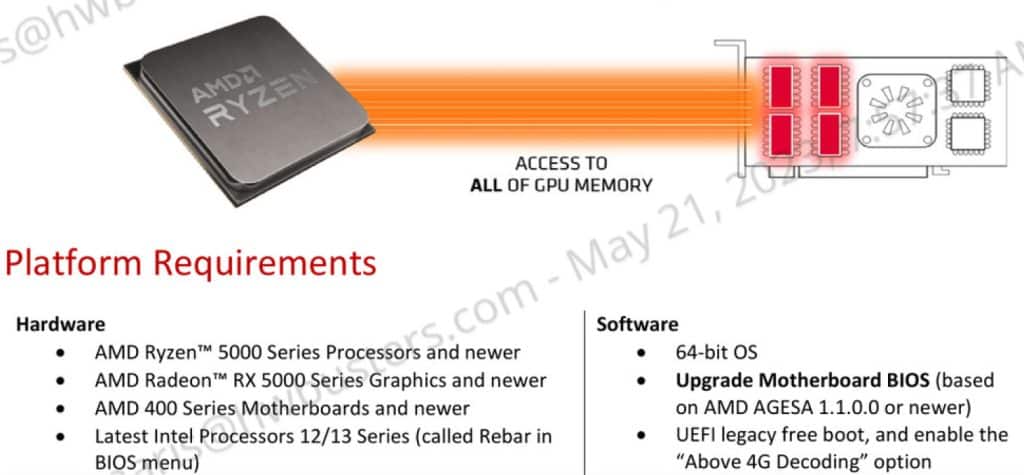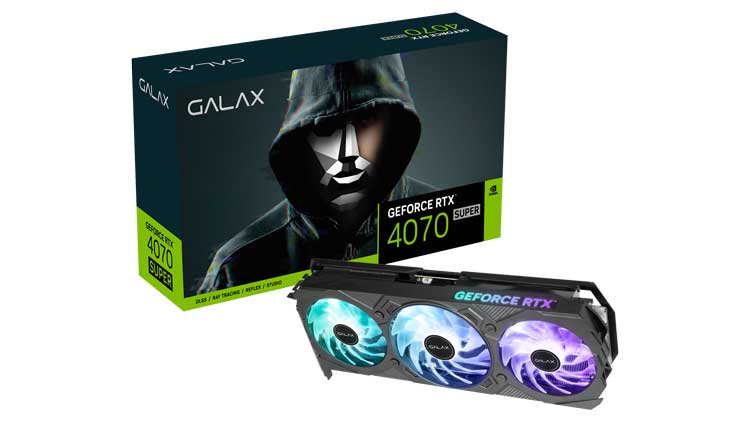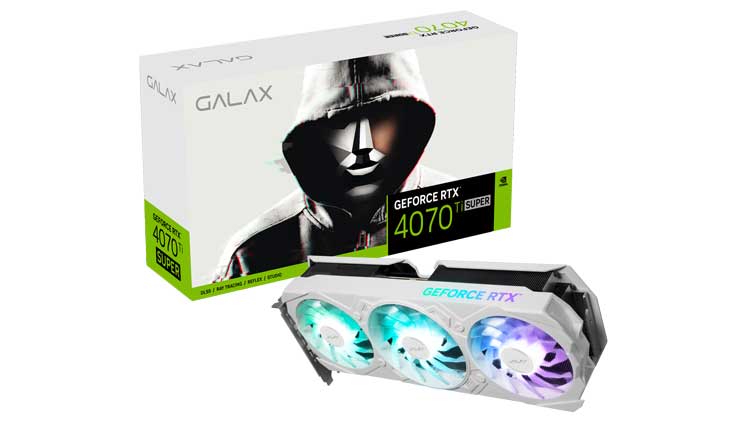Rasterization
Rasterization is a technique that produces an image as seen from a single viewpoint. This is what GPUs use from the start. As modern GPUs became stronger and stronger, rasterization allowed for real-time graphics like the ones we see in games. Moreover, the increase in GPU power eventually led to 3D gaming as we know it nowadays.
Ray Tracing
In a few words, Ray Tracing (RT) creates more realistic scenes by accurately showing lighting. It doesn’t only show what is visible from a single point of view, but it shows what is visible from many different points of view in many different directions. It works by shooting rays into a scene from the camera’s viewpoint. These rays interact with the scene’s objects, and the effects of these interactions have to be shown accurately, which demands heavy computing power to show the correct ray paths and the corresponding accents. If this wasn’t enough, the first interaction of a ray hitting an object and the ray’s reflections on other objects must also be calculated for a more realistic outcome. In real life, shots of rays affect the entire scene. The same applies to graphics, where all pixel information must be considered for a highly realistic result. This is extremely demanding in real-time, even with today’s hardware. Nvidia and AMD introduced various techniques for real-time ray tracing, minimizing the computational power required for realistic scenes.
Path Tracing
Path tracing is a method of modeling real-time dynamic lighting in a scene, and it is not new at all since it originated in the mid-80s. In 1986, CalTech professor Jim Kajiya’s paper “The Rendering Equation” connected computer graphics with physics through ray tracing and introduced the path-tracing algorithm, making it possible to represent how light scatters throughout a scene accurately.
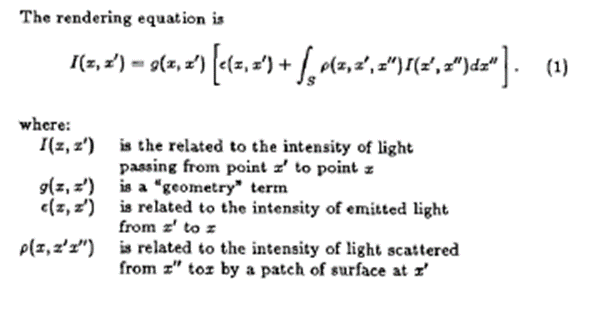
In this method, many rays are shot in a scene, and the algorithm has to track them as they interact with the scene’s object. The critical factor that lowers computing power demands is that instead of monitoring every single ray at the pixel level, it only tracks a portion of these rays, trying to stay as close as it gets to reality. To put it differently, in path tracing, the algorithm determines which reflections are the most important to provide an accurate close-up of a real-life scene and throws out the ones that are not so important. Needless to say, though, the more ray samples the algorithm takes into account, the better the visual result, but it comes at an increased computing power cost.
Since path tracing results cannot be perfect, they are combined with denoising algorithms to provide a cleaner image. The results are astonishing, as you can see in the screenshot below. To read more about path tracing, you should look at this article, written by an NVIDIA employee.
Combining Rasterization, Ray Tracing & Path Tracing!
Rasterization casts one set of rays from a single point, which vanishes when they hit the first object. Ray tracing casts rays from many points in any direction, and finally, path tracing tries to truly simulate lighting physics, having ray tracing as one of its components.
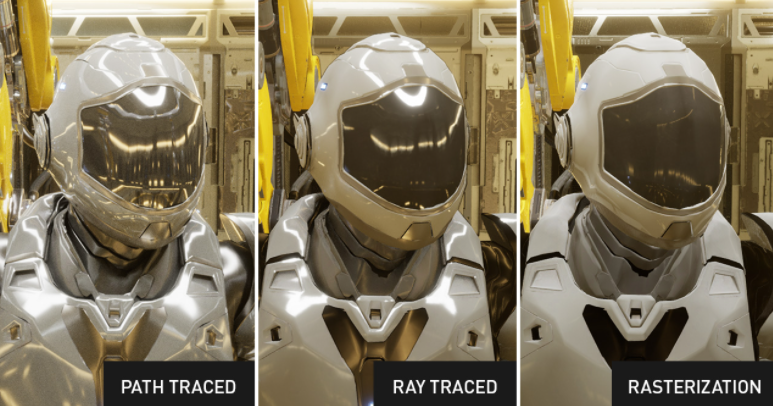
For Video Creators: AMD Smart Access Video
AMD’s SmartAccess technology exploits systems where the CPU and the GPU are provided by AMD, accelerating the overall platform’s performance by improving data transfers and reducing latency. The processor’s built-in Radeon graphics engine handles the productivity tasks for power savings, while advanced algorithms hand control over to the discrete GPU for maximum performance in heavy tasks.
I will focus here on SmartAccess Video, which spreads the decoding and encoding workloads across all available video engines by accessing the video compression engines in both the Ryzen processor and the Radeon graphics to distribute video-related encoding and decoding tasks. This gives you fewer dropped frames and faster video editing and transcoding experience.
To test this new technology, you must install Blackmagic’s Davinci Resolve 18.5 or most recent versions, enabling AMD’s Smart Access Video support.
AMD Smart Access Memory
This technology gives the Ryzen and latest Intel processors direct access to the full Radeon graphics memory, increasing performance. Not all games benefit from SAM, but most games have a performance increase.
AMD FidelityFX Super Resolution 3 (FSR 3)
The first generation FSR was introduced in 2021, and in 2022, AMD released FSR 2, and in 2023, FSR3. In a snap, FSR is an open-source upscaling technology, supporting a broad spectrum of hardware, not only by AMD. AMD FSR 3 combines super-resolution temporal upscaling and advanced Frame Generation that uses optical flow technology and temporal game data to help deliver massive framerates in supported games. It also adds a new “Native AA” quality mode that applies high-quality AA and sharpening without any upscaling for improved image quality over native resolution, and the latest update to AMD FSR 3 now adds support for VRR technologies such as AMD FreeSync.
AMD HYPR-RX with AMD Fluid Motion Frames
The latest AMD Software version 24.1.1 update brings a transformative new feature called AMD Fluid Motion Frames (AFMF). This cutting-edge frame generation feature increases frame rates and smoother movement for game-winning performance across all DirectX® 11 and DirectX® 12 games. AFMF is part of the HYPR-RX profile, which can be enabled with one simple click on the AMD Software home tab. HYPR-RX delivers the combined performance benefits of AFMF, Radeon Super Resolution, Radeon Anti-Lag, and Radeon Boost, delivering gamers the ultimate gaming experience.
| Game | AMD Radeon Frame Gen (FSR / AFMF) | Nvidia RTX Frame Gen (DLSS 3) |
| Fortnite | ✅ | |
| Apex Legends | ✅ | |
| PUBG: Battlegrounds | ✅ | |
| Counter-Strike 2 | ✅ | |
| Grand Theft Auto V | ✅ | |
| Baldur’s Gate 3 | ✅ | |
| Valorant | ✅ | |
| Overwatch 2 | ✅ | |
| Call of Duty: Modern Warfare 3 | ✅ | ✅ |
| Starfield | ✅ | ✅ |
| Minecraft | ✅ | |
| League of Legends | ✅ | |
| Rocket League | ✅ | |
| Cyberpunk 2077 | ✅ | ✅ |
| THE FINALS | ✅ | ✅ |
| Tom Clancy’s Rainbow Six Siege | ✅ | |
| World of Warcraft | ✅ | |
| Escape from Tarkov | ✅ | |
| Palworld | ✅ | |
| Rust | ✅ | |
| Destiny 2 | ✅ | |
| Battlefield 2042 | ✅ | |
| Lethal Company | ✅ | |
| War Thunder | ✅ |
- Prologue & Technical specifications
- AMD’s Key Technologies
- Box & Contents
- Part Analysis
- Specifications Comparison
- Test System
- Game Benchmark Details
- Raster Performance
- RT Performance
- RT Performance + DLSS/FSR Balanced
- Raytracing Performance + DLSS/FSR Balanced + FG
- DLSS/FSR Balanced (No RT)
- DLSS/FSR Balanced + FG (No RT)
- Relative Perf & Perf Per Watt (Raster)
- Relative Perf & Perf Per Watt (Raster + DLSS/FSR)
- Relative Perf & Perf Per Watt (RT)
- Relative Perf & Perf Per Watt (RT + DLSS/FSR)
- Relative Perf & Perf Per Watt (RT + DLSS/FSR + FG)
- Rendering Performance
- Operating Temperatures
- Operating Noise & Frequency Analysis
- Power Consumption
- Clock Speeds & Overclocking
- Cooling Performance
- Epilogue

